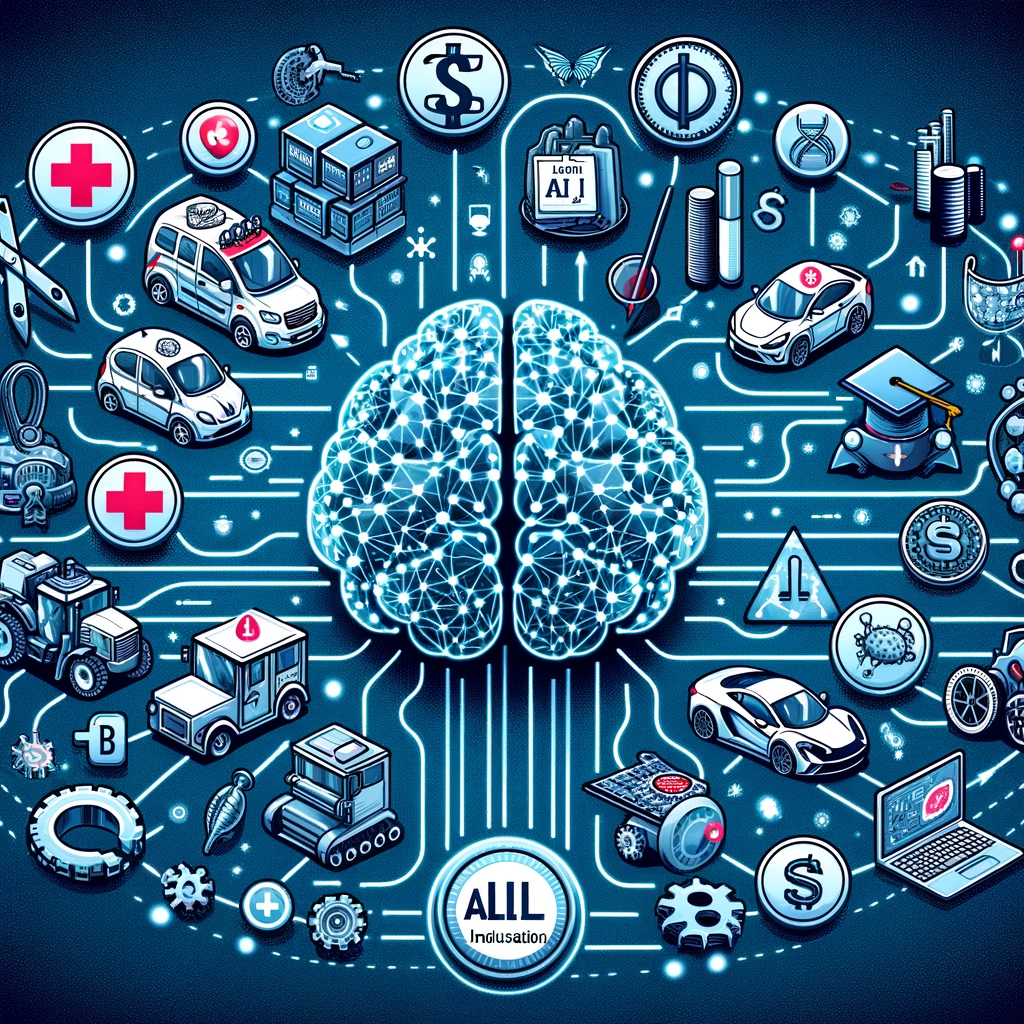Table of Contents
Introduction
Welcome to the whimsical world of Large Language Model (LLM). where the alphabet soup of AI becomes a gourmet experience that can leave tech gurus and greenhorns alike hungry for more!
The ABCs of LLM: A Not-So-Secret Society of Words
In the buzzing beehive of tech, a new queen has emerged: the Large Language Model, or LLM for short. This isn’t your run-of-the-mill spellchecker on steroids; we’re talking about a brainy behemoth that feasts on text – lots and lots of text.
1. Chit-Chat Champions: AI Conversation Bots
Gone are the days when talking to your computer was a one-way street. LLMs have transformed our machines into Chatty Cathys. Thanks to a sprinkle of Natural Language Processing (NLP) magic, these AI Conversation Bots are ready to debate the finer points of pizza toppings or the latest football stats.
2. The Crystal Ball of Text: GPT-3 and Its Siblings
Enter the crystal ball of text generation: GPT-3, and its newer, shinier sibling, GPT-4. These are not just clever clogs; they’re the wizards of woodcraft, the sultans of sentences, the oracles of the written word. They’re a part of the LLM family, predicting what you want to say next, often before you even know it yourself!
3. Master Chefs of Machine Learning Algorithms
LLMs are like master chefs in the kitchen of language, mixing Machine Learning Algorithms with a pinch of context to cook up coherent, and sometimes even poetic, text. It’s deep learning meets deep thinking, where the recipe book is constantly being rewritten.
4. The Puppeteers: Deep Learning Networks
These models are like puppeteers pulling on the strings of syntax and semantics, bringing life to the inanimate. Deep Learning Networks form the backbone of these systems, learning patterns and nuances in language through layers and layers of artificial neurons.
5. Fortune Tellers of Phrase: Language Prediction Technology
Have you ever been in awe of autocomplete features that finish your sentences? That’s Language Prediction Technology for you – LLMs that are so tuned in to language patterns, they could moonlight as fortune tellers at the local fair.
6. Robo-Writers: Automated Content Creation
Then there are the Robo-Writers, the kings and queens of Automated Content Creation. Need a blog post or a catchy tweet? LLMs have got you covered, generating content like it’s going out of fashion.
7. The Transformers: Not Just Robots in Disguise
No, not those Transformers. We’re talking Transformer Models – the real stars behind LLMs. They’re adept at handling different parts of language and understanding context, making them the cool kids on the AI block.
8. Understanding the Understood: AI Language Understanding
It’s one thing to talk the talk, but LLMs walk the walk, thanks to AI Language Understanding. They don’t just mimic speech; they get it, really get it, like your best friend who always knows just what to say.
9. The Linguists of Computing: Computational Linguistics
Dig a bit deeper, and you’ll find the nerdy niche of Computational Linguistics, where LLMs are both the students and the professors, constantly learning and teaching the complex dance of human language.
10. The Brainiac of Binary: Advanced Machine Learning
And let’s not forget the brainiacs of the bunch: Advanced Machine Learning systems that keep pushing the boundaries of what machines can understand and create.
LLM Applications in Various Fields

Large Language Models (LLMs) are like the multitool of the digital era. They’re being used across industries in some pretty cool ways. For instance, in healthcare, they help doctors quickly sift through medical research to find the information they need. In the world of finance, they’re analyzing market trends to give investment advice. And for us regular folks, they’re powering smart assistants like Siri and Alexa, making our lives a bit easier every day.
LLM Advancements and Innovations
Recently, LLMs have grown smarter and more efficient. Take GPT-3, for example. It’s like the Mozart of AI, composing poetry, writing articles, and even doing some basic coding. These models are getting better at understanding us and the context of conversations, making interactions more natural and less like talking to a robot.
LLM Impact on Society
The impact of LLMs on society is huge. They’re not just cool tech toys; they’re changing how we work, learn, and play. For example, they’re behind the chatbots on websites, providing customer support. They’re also helping students learn by giving them instant feedback on their writing. But it’s not all sunshine; there are concerns about job displacement and ensuring that these tools are used ethically.
LLM Research and Development
There’s a ton of ongoing research in LLMs. Scientists and engineers are working hard to make them understand not just our words, but our emotions and cultural nuances. They’re also trying to make them more energy-efficient and able to handle more complex tasks, like helping design smarter cities or better managing natural disasters.
LLM Future Directions
Looking ahead, the possibilities with LLMs are as vast as the universe. We might see them become our personal life coaches, giving us advice on everything from health to career choices. They could become the ultimate personal assistants, managing our schedules, and even helping us stay in touch with friends and family. And who knows? They might even help us bridge language barriers, instantly translating conversations as we speak.

FAQ’s
What are large language models?
Imagine a giant sponge that’s been soaking up everything written down – books, articles, even tweets. That’s an LLM for you. It’s a type of AI that understands and generates human-like text. For example, when you type “Why is the sky…” into a search engine and it suggests “blue,” that’s an LLM doing its thing.
How do large language models work?
LLMs work by recognizing patterns in the data they’ve read. They’re like the ultimate detectives of language, picking up on clues to make educated guesses about what comes next in a sentence.
What are the different types of large language models?
Just like ice cream comes in different flavors, LLMs come in various types. Some are experts in one language, while others, like the Babel fish from “The Hitchhiker’s Guide to the Galaxy,” understand multiple languages.
Which are the leading large language models available today?
GPT-3 is the superstar of LLMs right now. Think of it as the AI version of Shakespeare, able to whip up everything from a sonnet to an essay in seconds.
What resources are available for learning more about large language models?
Curious cats can turn to online courses, informative YouTube channels, or even tech podcasts that unpack the complex world of LLMs.
What are large language models used for?
LLMs are the Swiss Army knives of the digital world. They help with everything from summarizing articles to helping lawyers sift through legal documents.
How are large language models being used? Large language models are like the helpful genies of the digital world. They’re being used in many ways. For example, they help write and suggest emails for you, chat with you on websites when you need help with a product or service, and can even write stories or create music! They’re also used by businesses to analyze what people are saying about them on social media.
How are large language models trained? Training a large language model is a bit like teaching a super-smart parrot to talk. You give it a whole bunch of conversations, books, articles, and all sorts of written stuff (this is called ‘data’), and it starts to learn how words and sentences fit together. It looks for patterns in this data so that when you talk to it, it can figure out the best thing to say back.
What are the limitations of large language models? Large language models aren’t perfect. They can sometimes make mistakes, like a parrot saying something silly. They might write things that don’t make sense, get facts wrong, or not understand jokes or sarcasm. Also, if you ask them something very new or unique, they might not be able to come up with a good answer because they haven’t seen anything like it in their training.
Understanding and mitigating bias in large language models?
Sometimes, these models can pick up bad habits from the data they learn from, like thinking that only men are doctors and only women are nurses. This is called ‘bias.’ People are working on fixing this by teaching the models with better, more fair data and by creating rules to help the models avoid these biased mistakes.
What are some Ethical considerations of developing and using large language models?
Creating and using large language models comes with big responsibilities. It’s important to make sure they’re used to help people and not hurt or trick them. For example, we don’t want them to write fake news stories or invade someone’s privacy. We also have to think about whether it’s fair to use these models to do jobs that people used to get paid to do. These are all ethical questions that developers and users of large language models need to think about.
“AI Evolution: 13 Stages from Rule-Based to Quantum AI!”
References:


